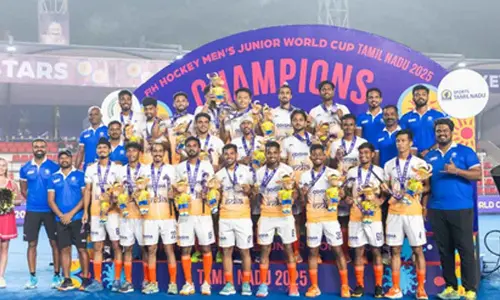Signs that show you're nearing ovulation

In an ideal menstrual cycle, ovulation takes place on day 14 and the fertile window opens on day 10. But since the menstrual cycle varies, it’s best to identify the signs of ovulation instead of calculating the days
During each menstrual cycle, healthy women who are not using birth control have around a 25 to 30 per cent chance of conception. This window of opportunity opens right before and during ovulation and lasts four-five days. Ovulation is the process by which a woman's body releases one or more eggs from the ovary. The five days leading up to and including ovulation are the most fertile days. If the egg is fertilised and implanted successfully, it results in pregnancy.
In an ideal menstrual cycle, ovulation takes place on day 14 and the fertile window opens on day 10. But since the menstrual cycle varies, it's best to identify the signs of ovulation instead of calculating the days. By identifying the signs of approaching ovulation, couples trying to conceive a baby can boost their chances of pregnancy. Couples should indulge in sexual intercourse during the days leading to ovulation to increase their odds of conception.
Changes in cervical mucus
As a woman nears ovulation, her body produces more oestrogen, rendering cervical mucus to become sticky, wet and clear like egg white. An increase in such secretion is detected chiefly immediately prior to ovulation. And the body produces the greatest amount of this type of cervical mucus on the day of ovulation. Once the ovulation ends, the discharge gradually becomes thicker and lesser. When women notice a stretchy, egg-white-like cervical mucus, it's the time when they are most fertile.
Ovulation pain
Many women experience a sharp and sudden pain, usually mild, on the side of their abdomen when the ovary is releasing the egg. This is known as ovulation pain or Mittelschmerz. It generally feels like a cramp or a spasm and lasts a few minutes to a few hours. However, sometimes the pain may last for as long as a day or two with high pain, in which case, women must consult their doctor. This pain is a sign of fertility since it indicates the release of the egg or ovulation.
Change in basal body temperature
Basal body temperature is the body's temperature when at rest. Many women believe the average body temperature is 98.6 F, but the truth is it varies throughout the day and month. Immediately after ovulation, most women will notice a rise in their average body temperature. The temperature will stay elevated during that time. By monitoring their basal body temperature first thing in the morning regularly and keeping a track, women will be able to determine whether ovulation has occurred.
Libido changes
Many women who track signs of ovulation notice libido changes before or during ovulation. An increase in sex drive can be an indication of nearing ovulation and the opening of the fertile window. However, sometimes women may also notice an increase in sexual desire when they are anxious, stressed or depressed. As a result, women should keep an eye out for all the accompanying signs of ovulation to identify when ovulation is taking place.
Changes in the cervix
Just before and during ovulation, a woman's cervix may move higher and feel softer and more open. By checking these changes in the cervix's position along with the cervix mucus, women can know whether they are ovulating or not. After ovulation, the cervix feels harder and more tightly closed. By understanding these differences in the cervix's position and mucus, women can spot their fertile window. Women can ask their doctor to guide them as to how they can check these changes in the cervix's position.
Breast tenderness
Tender breasts or sore nipples can be an indicator of ovulation because of the hormonal changes taking place in the body right before and after ovulation. Some women experience tender breasts just before ovulation, while others may notice the change right after ovulation has occurred. Although women can use this change as a way of confirming ovulation sometimes, breast tenderness may as well be a side-effect of fertility drugs if the woman is consuming them.
Summing up
Many couples struggle to conceive. Knowing the signs of approaching ovulation and the ability to identify their fertile window can help women increase their chances of conception. Most couples who understand how to detect ovulation signs and time sexual intercourse accordingly are able to get pregnant faster than those who don't.
(The author is a Consultant Obstetrics & Gynecology, Apollo Cradle & Children's Hospital, New Delhi)














